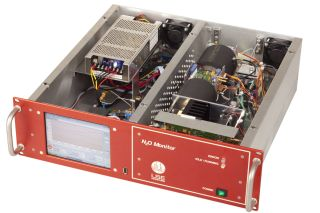
Ultra sensitive N2O Monitor
For ambient air and stack measurements
Nitrous oxide (N2O) plays an important role as greenhouse gas and is involved in the depletion of the ozone layer in the atmosphere. In the last century, the anthropogenic sources of N2O increased by a factor 2 and, consequently, the concentration in the atmosphere increased from 285 in 1900 to 330 ppbv in 2010. Emissions from Agriculture are the main source, followed by industry and energy plants. Globally, the natural sources are still causing over 50% of the N2O emission, but in many regions and countries, e.g. the Netherlands, they are only playing a minor role (less then 5%) while agriculture and industry are the main producers. The world wide increase is generally considered to be caused solely by the anthropogenic sources.
Although the concentration of N2O in the atmosphere is relatively high (330 ppbv), the day and night fluctuations are small and so are the seasonal differences. Therefore, highly sensitive and stable instrumentation is needed to monitor N2O emission in the atmosphere. This instrumentation was not commercial available up till now.
For the detection of N2O, LSE Monitors has developed a highly sensitive laser-based photoacoustic detector, able to monitor continuously and on line the concentration of N2O with a detection limit below one ppbv within several minutes. The detector is specially designed to work stand alone with virtually no maintenance, it is robust and has user friendly software. It is designed to keep the cost of ownership as low as possible.
Documentation
 LSE 4405 air monitoring of Nitrous oxide
LSE 4405 air monitoring of Nitrous oxide
 LSE Panel N2O
LSE Panel N2O
 LSE 4410 air monitoring of Nitrous oxide
LSE 4410 air monitoring of Nitrous oxide